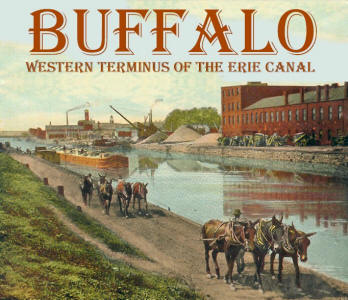|
294 APPENDIX.
Intelligence having been
received by the Corporation of New York, from the acting Canal
Commissioners, that the gigantic work would be completed and
prepared for navigation on the twenty-sixth of October, measures
were immediately taken by that body, in connexion with the principal
cities and villages along its extended line, for the celebration of
the event, in a manner corresponding with its magnitude and
importance; and in order that our fellow-citizens at the West might
be duly apprised of the feelings of the metropolis on the occasion,
a Committee, consisting of Alderman King and Alderman Davis, was
dispatched to Buffalo, to tender the hospitalities of our City to
the several Committees which might be appointed on the route, to
participate in the festivities of the occasion. But to guard
against the disappointment that might arise from any unforeseen
accident, which might have retarded the work beyond the specified
time, arrangements were made for the firing of a grand salute, to be
commenced at Buffalo, at a given hour, and continued to New York, by
guns stationed at suitable points along the whole intermediate
distance. The Committee arrived safely at Buffalo, where they were
received with a cordial welcome, and found-the Canal completed, and
every thing prepared for the commencement of the celebration.
Early
on the morning of the twenty-sixth of October, the appointed day,
the village thronged with the yeomanry of the country, who, alive to
the subject, had assembled in vast numbers to witness the attendant
ceremonies of the departure of the first boat. At about nine o'clock
the public procession was formed in front of the Court House, in
which the various societies of mechanics appeared, with appropriate
badges and banners to distinguish each; the whole preceded by
the Buffalo band, and Capt. Rathburn's Company of Riflemen, and
followed by the Committees, strangers, &c. Thus formed, the
procession moved through the street to the head of the Canal, where
the boat, Seneca Chief, elegantly fitted, was in waiting. Here the
Governor and Lieut. Governor of the State, the New York Delegation,
with the various Committees from different villages, including that
of Buffalo, were received on board, and after mutual introductions
in the open air, Jesse Hawley, Esq. delivered an Address, brief, and
peculiarly appropriate, in behalf of the citizens of Rochester. He
was deputed "to mingle and reciprocate their mutual congratulations
with the citizens of Buffalo on this grand epoch." The Canal, as a
matter of State pride, was spoken of with much felicity-- “A work that will constitute the lever of industry, population,
|

